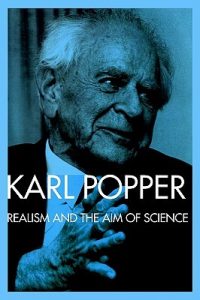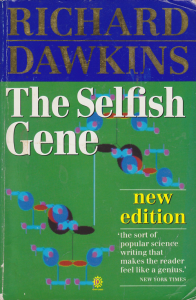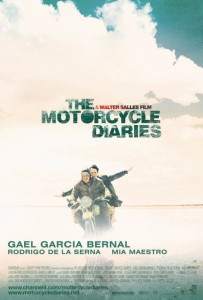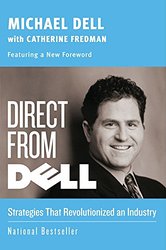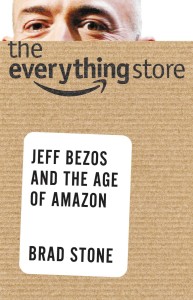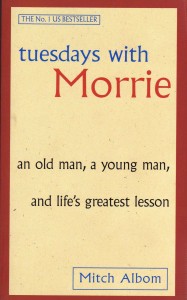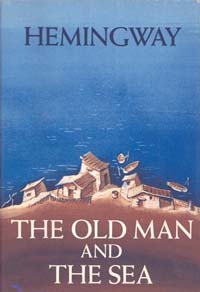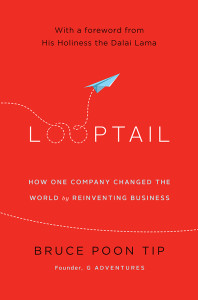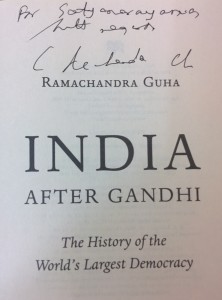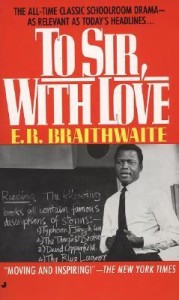Books are assailants that attack the virgin minds unassaulted by the thoughts heretofore. — yours truly
Books I read in 2024
- Dark Calories: How Vegetable Oils Destroy Our Health and How We Can Get It Back
- The Fatburn Fix: Boost Energy, End Hunger, and Lose Weight by Using Body Fat for Fuel
- The Cancer Code: A Revolutionary New Understanding of a Medical Mystery
- Fast, Feast, Repeat: The Comprehensive Guide to Delay, Don’t Deny® Intermittent Fasting
- The Positive Birth Book: A New Approach to Pregnancy, Birth and the Early Weeks
- Ayurvedic Garbha Sanskar
- The Diabetes Code: Prevent and Reverse Type 2 Diabetes Naturally
- Rich Food Poor Food: Your Grocery Purchasing System
Books I read in 2023
- India that is Bharat: Coloniality, Civilisation, Constitution
- Free The Animal: Lose Weight & Fat With The Paleo Diet
- Eat Stop Eat: Intermittent Fasting for Health and Weight Loss
- The Complete Guide to Fasting: Heal Your Body Through Intermittent, Alternate-Day, and Extended Fasting
- Aghora III: The Law of Karma
- Shunya
- If Truth Be Told: A Monk’s Memoir
- Aghora II: Kundalini
- On Meditation: Finding Infinite Bliss and Power Within
- Varna, Jati, Caste: A Primer on Indian Social Structures
- Apprenticed to a Himalayan Master: A Yogi’s Autobiography
- Aghora: At the Left Hand of God
- The Palace of Illusions
- Savarkar: Echoes from a Forgotten Past, 1883–1924
- Jewel in the Lotus: Deeper Aspects of Hinduism
Books I read previously (years <= 2022) - Good Calories, Bad Calories: Fats, Carbs, and the Controversial Science of Diet and Health
- The case against sugar
- Misbehavior of markets
- GMO myths and truths
- On bullshit
- Who Really Feeds the World?: The Failures of Agribusiness and the Promise of Agroecology
- The Parasitic Mind: How Infectious Ideas Are Killing Common Sense
- The economic laws of scientific research
- Death: for this who shall die
- Sanskrit non translatables
- Terminology of Veda
- Complexity: a guide tour, how nature works: the science of self-organizing criticality
- Happy Accidents: Serendipity in Modern Medical Breakthroughs
- Alchemy

Disclaimer: I have stopped writing reviews of the books I read, for my changing views of the book as I come of age. I do not hold the same view for "most" of the books I reviewed previously.
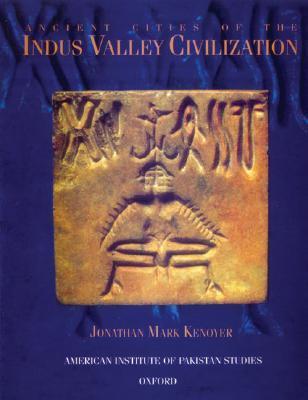
Sprouting amidst tangled roots that mark the furthest growth of the parent tree, a new pipal sapling struggles to spread its own roots into fertile soil. Over time the sapling grows to dominate the jungle with rich foliage and fruit, and imperceptibly what was once the edge of the old tree becomes the centre of the new. In much the same way, the first urban civilization of the subcontinent gradually faded into the background as new cultures and societies start to emerge on the subcontinent. Little did John Hubert Marshall know that the excavations conducted under his supervision in 1920s would not only reveal ancient cities of vast proportions but also antecedents of the subcontinent. Since the excavations there have been many flawed theories floating around about the Indus civilization, with their hidden propaganda — the standard bearer of this propaganda is the hairy-and half-baked-brainy, knavish, renegade imbecile, Romila Thapar, who has no clue what she is talking about when she alludes to Indo-Aryan invasion but only gerrymandering to the West. Is my scorn toward Romila enough, or should I find more expletive! With that said, there are other fraud western historians/geneticists, namely David Reich from Harvard who published a paper in 2019, with vested interests and flawed statistics tries to embolden the invasion theory. In contrast to these flawed theories, Jonathan Mark Kenoyer, in this book, by fortifying the reader with archaeological evidence, makes an attempt to provide a balanced view of the ancient cities.
Although there have been more developments in terms of evidence since the publication of the book two decades ago, this book serves as a strong foundation on which Indus cities can be erected which can withstand the mighty winds that may blow past only to sabotage it! Kenoyer — unlike the idiots who are prone to the availability heuristic, by which the salient is mistaken for the statistical, and the conspicuous and emotional effect of an event makes us think it is occurring more regularly than in reality — exegesis presented in this book may leave the reader with a balanced view of the ancients cities from their cradle to grave — and it is the reader’s discretion and experience to interpret or unravel the cities. It had been a great joy and elation reading this book to find/know the roots of customs and culture that we enshrine today in the subcontinent!
This book, Realism and the Aim of Science, is the first volume of Sir Karl Popper’s Postscript to the Logic of Scientific Discovery. Although it was written in about four decades ago, this book is very much germane today and busts the bullshit assault by vendors using “science” to sell products that many people, in their mind, confuse science and scientism. Karl Popper distinctly writes that scientific theories remain uncertain, however ‘successful’ and well ‘supported’ by evidence and the result of discussion, and we may be unable to foresee what kind of change will become necessary. “It is surprising that”, Popper adds, “philosophers naively continue to discuss the problem of epistemology in terms of the origin of our knowledge in sense-data or perceptions, or in terms of the number of ‘repetitions’ of the ‘observations’ of a black ravan or White swan.” Popper, in his volumes of work, advocates the falsifiability, testability, and refutability of a theory. Furthemore, he emphatically says that scientific theories are guesses or conjectures which may or may not be true, and that we can never know of a theory that it is true, even if it is true. He presents an exegesis on subjective and objective theory of knowledge. He explicates the problem of induction in terms of corroboration, certainity, uncertainity and probability. Popper conclusively debunks the problem of induction — which clearly arises from the fact that inductive inferences are not valid: which is the same as saying that inductive conclusions do not follow deductively from the inductive premises. This book also expounds on the problem of demarcation — demarcation between theories based on testability and falsifiability rather than distinguishing the theories as science and metaphysics.
With this said, I conclude by saying that — the science we have been witnessing today is the death of Popperian science and the new age of ignorance, thanks to “science journalism.” Science is moving from fallibilism to councils of cardinals declaring what is right!
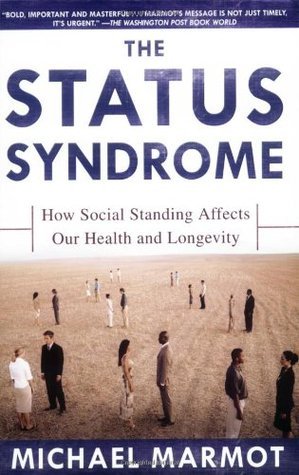
Any book or idea that is statistically oriented -barring the book on statistics per se — should be taken with a truckload of skepticism; however, the fact that this book falls in the mediocristan radar of statistics made my read like a walk through boulevards. The author in this book made a salubrious effect in exposing the health gradient seen in the society — the higher the status in the pecking order the healthier people are likely to be: which is what author calls status syndrome. Michael Marmot, in his dialectic and syllogistic approach — lays bare — no holds barred — how one’s social standing in society affects health adversely or favorably. For a given biological agent and cause, the author soberly writes, the people in the lower strata are more likely to be affected. This cannot be mistaken for lack of money or other facilities. In fact, the author trenchantly says that when the problems of privation have been solved, how much money you have is not as important as how much you are relative to others in society. More emphatically, what characterizes being poor and lower in the hierarchy is a great sense of helplessness — lack of control over life circumstances. The author ominously adds that poverty is more than a lack of money, it is more of circumstances we live. The line from John Kenneth: who can say for sure that the deprivation which afflicts him with hunger is more painful than the deprivation which afflicts him with the envy of his neighbors car — is as gravely a concern as it appears sardonic. It is this sense of helplessness, this lack of control that affects one’s biological stress pathways.
What separates one from another in the pecking order, according to the author, are the control, predictability, degree of support, threat to status. These factors modulate the impact of psychologically threatening stimulus — and all of them likely to be linked with social hierarchy. While the point the authors makes drives home already, my view on the observed support from the bottom-up social hierarchy directly follows from my favorite line by Lyndon Johnson: it is no longer easy to get the help you need when you are no longer on the top of the world (here replace the world with social hierarchy). This support one relishes is the comportment of a fawning man indulging in the excess of hobnobbing. To conclude — each of us has several roles, whether as a parent, partner, child, employer, employee, resident, citizen, opinion former, etc.; and whatever roles we assume has an important influence on our own opportunities for self-realization, or autonomy and social-participation. These are not just pleasant things to have, but also immensely affects health if thwarted. The fact we systematically thwart these for people lower in the hierarchy is a massive blot on a civilized society.
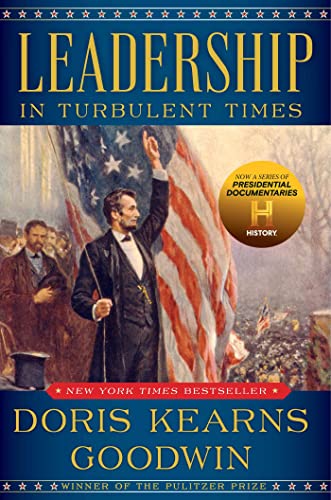
I begin by writing my favorite lines of Theodore Roosevelt and Lyndon Johnson:
Leadership success does not necessarily be obtained by attaching oneself to a series of titled positions. Leadership had to be earned; it is not something to be granted by rank or title.
The way you get ahead in today’s world, you get close to those that are the heads of things. It’s no longer easy to get the help you need when you are no longer on the top of the world
This book chronicles the four luminaries who served as the major pillars of America that is today: Abraham Lincoln, Theodore Roosevelt, Franklin Roosevelt, and Lyndon Johnson. Amongst these towering figures, the travails Theodore Roosevelt had undergone before he finally became the youngest President of America is both electrocuting and electrifying. Despite being born in a privileged family, T. Roosevelt believed, not anything like many others, that privilege can stunt ambition, just as the lack of privilege can fire ambition. “The light has gone out of my life,” writes T. Roosevelt, after the consecutive demises, of his both wife and mother, on the same day — it was a grim and evil fate — which made him a full-blown stoic fatalist. After his unfortunate turn in the political affairs, he — discovered that the light at the end of the tunnel is the headlight of an oncoming train — was debarred from the party. Unlike candlelight that had been snuffed out, he retreated himself into the lap of nature with a deadend heart and fear of intimacy, for two years, only to become a genuine luminary, guide and leader. This book, although, recounts gripping anecdotes of the other three American leaders, who are like rocks in a polishing cylinder brought to shine by tumbling contact with a wide variety of people, I felt disconnected when the book focussed on politcking and the political minutiae of America — as never have I had an interest in American politics as much I have never had an interest with Russian politics. However, these four men, [maybe I should add ‘myself’ into the list after a few years, who knows, I am as fatalistic as T. Roosevelt ;-)] are exemplaries of proving that great characters are formed not in the still calm of life, or the repose of a pacific station — they are formed in contending with difficulties. Great necessities call out great virtues. “The best way to define a man’s character would be to seek out the particular mental or moral attitude in which, when it came upon him, he felt himself most deeply and intensely alive and active. At such moments, there is a voice inside which speaks and says, ‘This is the real me!’ “

There is nothing lovelier on this planet than a flower, no more essential than a plant. Before I say anything about this book let me remark that this book ‘the secret life of plants’ comes as a bafflement and sounds asinine to many who are trapped in the valley of materialistic concepts, refusing to believe there is anything other than the physical-material world of our five senses and to who give credence to the dusty mouthings of academicians. This book shore up the argument that plants are living, breathing, communicating creatures, endowed with personality and the attributes of a soul, with a plethora of experiments carried out by assorted botanists, scientists and researchers. The ‘secret’ life of plants spill the beans, not in indiscretion but with discreet, that plants possess within itself the capacity to take on manifold forms, and which at a particular time takes that form which is best suited to the conditions of the external environing world; and that plants if not complicated as animals, has a nervous system. Venturing into writing this book, I must say, is likened to opening a Pandora’s box which the author aims to close it with another book ‘the cosmic life of plants’. This book bears out human thinking, human passion, human anger, human kindliness and affection, all have far-reaching effects on the world of plants, that they are most susceptible to human thoughts and emotions, which affect their energy. The author also expatiates on the abusive use of chemical fertilizers, which when applied to plants results in dulling of their vibrations which in turn affects the human vibrations. This books also delves on dowsing, soil, chemicals, pesticides and other smorgasbord of things.
Criticism which transgresses the limit of fairness must inevitably hinder the progress of knowledge — Jagadish Chandra Bose.
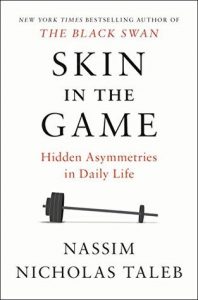
I first read Nassim Nicholas Taleb’s book black swan, the scales fell off from my eyes (at the time of writing this review, I have dry eyes) while providing me a clear vision of the narrow-sightedness of the so-called educated philistines and world per se — where people consider absence of evidence as the evidence of absence. This book, skin in the game, is predicated on Nassism’s earlier work on black swan, antifragile, fooled by randomness. The author profusely and vociferously talks on various subjects including how minorities, not majorities, run the world; ethical rules; social justice; and finally my personal favourite which I couldn’t agree more –how the intellectual yet idiot who cannot find coconut on coconut island, tell rest of us (well not to me, I don’t really care them) what to do, what to eat, how to think, how to speak… To my mind, Nassim is a, proverbial skewer of the societies’ long-held beliefs about risk and reward, politics and religion, finance and personal responsibility!
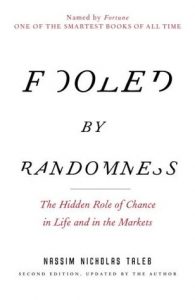
Not every so often a coup de foudre fulminate, a paroxysm of emotions exudes — but reading this book gave me a frisson of excitement, it served as a catharsis. This is my third book to read by Nassim Nicholas Taleb and the more I read the more I get a sense that is it a serendipity or am I preordained to know this guy, for he (or I) share exactly the same view I (or he) hold(s) of the society, of the pseudo-scientists, of the pseudo-intellectuals who think they know-it-all! Gates of my heart flung open as I read this book fooled by randomness. Have you ever ambled around bookstores and picked up a biography of a successful man/woman and leafed through a few pages? Without any modicum of astonishment, you will see them presenting their specific explanation on how they made it big in life by attributing a huge share of success to hard work, perseverance and to some other, generally very precise, reason; and undermining and allowing a disproportionate share of luck to their success. The premise of this book is how people are very often fooled by randomness. Taleb portentously writes that much of what rational thinking seems to do is rationalize one’s actions by fitting some logic to them. This book has borne me out for holding similar views after all humans are not rational beings and rationality is not defined by explicit verbalistic explanatory factors; it is what aids survival and what avoids ruin. This book is reminiscent of Einstein’s remark: common sense is nothing but a collection of misconceptions acquired by age eighteen! A wonderful and delightful book I read in recent times. Am I right in saying that the author and I share similar ideas, or is it just that Taleb has transmogrified me by exploiting my emotions, for I am emotionally vulnerable and I am incapable of taming my emotions like any other non-psychopath?

There is nothing lovelier on this planet than a flower, no more essential than a plant. Before I say anything about this book let me remark that this book ‘the secret life of plants’ comes as a bafflement and sounds asinine to many who are trapped in the valley of materialistic concepts, refusing to believe there is anything other than the physical-material world of our five senses and to who give credence to the dusty mouthings of academicians. This book shore up the argument that plants are living, breathing, communicating creatures, endowed with personality and the attributes of a soul, with a plethora of experiments carried out by assorted botanists, scientists and researchers. The ‘secret’ life of plants spill the beans, not in indiscretion but with discreet, that plants possess within itself the capacity to take on manifold forms, and which at a particular time takes that form which is best suited to the conditions of the external environing world; and that plants if not complicated as animals, has a nervous system. Venturing into writing this book, I must say, is likened to opening a Pandora’s box which the author aims to close it with another book ‘the cosmic life of plants’. This book bears out human thinking, human passion, human anger, human kindliness and affection, all have far-reaching effects on the world of plants, that they are most susceptible to human thoughts and emotions, which affect their energy. The author also expatiates on the abusive use of chemical fertilizers, which when applied to plants results in dulling of their vibrations which in turn affects the human vibrations. This books also delves on dowsing, soil, chemicals, pesticides and other smorgasbord of things.
Criticism which transgresses the limit of fairness must inevitably hinder the progress of knowledge — Jagadish Chandra Bose.

I first read Nassim Nicholas Taleb’s book black swan, the scales fell off from my eyes (at the time of writing this review, I have dry eyes) while providing me a clear vision of the narrow-sightedness of the so-called educated philistines and world per se — where people consider absence of evidence as the evidence of absence. This book, skin in the game, is predicated on Nassism’s earlier work on black swan, antifragile, fooled by randomness. The author profusely and vociferously talks on various subjects including how minorities, not majorities, run the world; ethical rules; social justice; and finally my personal favourite which I couldn’t agree more –how the intellectual yet idiot who cannot find coconut on coconut island, tell rest of us (well not to me, I don’t really care them) what to do, what to eat, how to think, how to speak… To my mind, Nassim is a, proverbial skewer of the societies’ long-held beliefs about risk and reward, politics and religion, finance and personal responsibility!
I picked this book up to learn Narendra Modi and the way he has risen from the ranks in the RSS and BJP to become the Prime Minister of India, which I believe would be inspiring and invigorating. To my dismay, the author expended much of his ink writing about the RSS and BJP politics in Gujarat state, which I am least interested if anything at all. This book that hit the shelves in bookstores during 2014 election if anything at all is a panegyric on the would be prime minister. No sooner did I take solace in Andy Marino’s remarks in the introduction of the book where he mentions that it presents an unbiased account of Modi than the disillusionment overhauled it by white-washing Modi and exonerating from his responsibilities by citing and scapegoating others. The main motive of the book is everyone is culpable of wrongs that have been done or being perpetrated except Modi. Modi is a saint and a seer who knows no wrong; and although he may be associated with RSS and BJP, he distances himself from anti-social elements in them. True that as he may be, I am least bothered if he was only a chief minister of Gujarat, as I am least bothered with Yogi Adityanath, but as a prime minister he is accountable for the draconian, atrocious ideologies of the BJP/RSS to 1.3 billion people, or to me, after all, I voted him. It is astonishing and laughable that for every wrong in the present you invoke the wrongs of the past. Yes, there have been many wrongs in the Congress, that’s precisely why people (or I) have voted Modi. But that does not mean that BJP can scapegoat Congress for its wrongs. After all two wrongs do not make right. This book is more of, in my opinion, a Congress-bashing, for all the wrongs it is the Congress to blame, for it has been in the power for long.
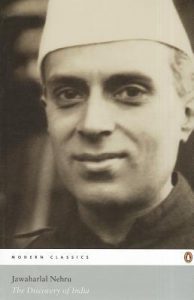
As long as Lions do not have story-tellers, the history of the hunt always glorifies the hunter. This adage is very much germane to India and its history, for it lacks historians of Indian origin in the pre-Nehru era, and much of India’s history is written by the foreigners, who visited India, with contempt and jaundiced opinions. The account of Indian history by outsiders is inveighed against Indians by marginalizing, and quoting as parochial in thought and incestually looking country. Unfortunately, this behavior is also observed in today’s Indians who talk glibly of modernism and modern spirit and the essence of Western culture and are at the same time ignorant of their own culture. Today most Indians take the external forms and outer trapping of the West, and imagine that they are in the vanguard of an advancing civilization. Naive and shallow and yet full of their conceits, they live an artificial life which has no living contact with the culture of the East or of the West.
To my delight, here comes the man garbed in Sherwani, Cambridge-educated, who is very much misunderstood by the so-called pseudo-elites and pseudo-intellectuals of India today, who reduced this man to a mere political party — Jawaharlal Nehru. Written over five months while in prison, Discovery of India, to my mind, is a living history of India. Although the book seems disjointed, jumbled and lacks unity, the richness of Indian history and its civilization forms the sinews of the book that bind it together. Nehru’s discovery of India spans from the Indus Valley Civilization-to-Muslim Invasions-to-British Empire in India. It is a manifestation of Nehru’s quest for India’s past. Much of ink flowed from Nehru’s pen analyzing texts like the Vedas and the Arthashastra, and personalities like the Buddha and Mahatma Gandhi.
Nehru writes at length covering the iniquities, rapacities, draconian laws and conditions of British rule in India, especially the way it made India static, dormant, and imprisoned the minds of the people of India interspersed with differences between Orient and the Occident cultures. In this book, Nehru evokes Rabindranath Tagore’s thoughts and musing, which din in my ear as I read the book and also I write this review. My heart bled as I read these lines
‘ The demon of barbarity has given up all pretense and has emerged with unconcealed fangs ready to tear up humanity in an orgy of devastation. From one end of the world to the other, the poisonous fumes of hatred darken the atmosphere. The spirit of violence which perhaps lay dormant in the psychology of the West has at last roused itself and desecrated the spirit of man.
The wheels of fate will some day compel the English to give up their Indian empire. But what kind of India will they leave behind, what stark misery? When the stream of their centuries’ administration runs dry at last, what a waste of mud and filthy they will leave behind. As I look round I see the crumbling ruins of a proud civilization strewn like a vast heap of futility!
By unrighteousness man proposers, gain what appears desirable, conquers enemies, but perishes at the root.
This book is a must read for those virgin minds unassaulted by the thoughts of what India was in the past!
Tagore writes –“To know and understand India one has to travel far in time and space, to forget for a while her present condition with all its misery and narrowness and horror, and to have glimpses of what she was and what she did. To know my country, one has to travel to that age, when she realized her soul and thus transcended her physical boundaries, when she revealed her being in a radiant magnanimity which illumined the eastern horizon, making her recognized as their own by those in alien shores who were awakened into a surprise of life; and not now when she has withdrawn herself into a narrow barrier of obscurity, into a miserly pride of exclusiveness, into a poverty of mind that dumbly revolves around itself in an unmeaning repetition of a past that has lost its light and has no message for the pilgrims of the future.”
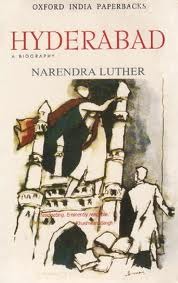
If a city’s raison d’etre is to make life better — Hyderabad is one of its kind. Hyderabad sits nestled amongst one of the oldest rock systems of the world. Hyderabad is the daughter of Golconda Fort which was built during Kakatiya rule — after the fall of the Kakatiya dynasty and a series of events Golconda Fort fell into the hands of Persians — Qutb Shahi dynasty. When Golconda Fort became congested with people teeming and hygiene could not be maintained, Quli passed a decree ordering the establishment of a new city which should be a replica of heaven on earth and unequalled in the world. Then, on an auspicious day when the moon was in the constellation of Leo and Jupiter was in its own mansion, a city is born — Hyderabad. Since then Hyderabad has attracted people from all over the world for a variety of reasons. It climate, its cosmopolitanism, its growth —Hyderabad a biography is living relic of the city, starting with the period prior to the city’s birth in 1591, the book presents an unbroken and colourful chronicle of Hyderabad, one of contemporary India’s most important cities. Charting the city’s fascinating march from Bhagnagar to Hyderabad to Cyberabad, this story is replete with diverse engaging, eccentric and often daring characters, some of whose lives are stranger than fiction!
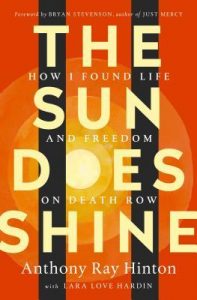
The book “The Sun Does Shine” is a scathing indictment of the death penalty that should give all of us good cause to fight for its abolition. We all have a family, a story, a series of choices and events that have led to a life spent in a cage — what would you do if you ever have wrongfully convicted for a crime you didn’t do? What would you do if you passed a polygraph test, but no one believed you? What would you do if you didn’t have enough money to pay for a good lawyer. This book is a memoir of a person named Anthony Ray Hinton who happened to experience all the foregoing questions and spent three decades on death row. The Sun Does Shine is both exasperating and inspiring. Exasperating because it exposes a broken criminal justice system marred by racial disparities, malicious intent, and often outright incompetence – of defence attorney, of judges, of so-called “experts”. This book presents in Hinton’s words how to find ways to recover after bad things happen, and how to make every ending be a happy ending.

This is a book rooted in facts and realities, not in predetermined posturing and sermonizing. This is a book that looks at benefits of meat eating as well as at the failures and drawbacks. The author doesn’t advocate any particular practice or point of view but merely presents the best evidence to its logical conclusions. To my mind, this book is haphazardly written and has soporific effect as I painstakingly tried to leaf through the pages of the book. Much of the book is crammed with numbers, rates, and comparison. However, it seems that the author has done hours and hours of stern research on the consumption of meat, and its ramifications, while he criticises the extant conclusion drawn in the literature and philosophical debates on meat-eating!
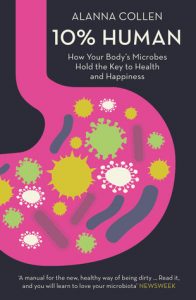
‘It’s in our DNA’, we say, as we grapple with our humanity and our idiosyncrasies, but really we know that our own DNA offers little instruction for our daily lives. That other 90 per cent, though — those other 100 trillion cells, and our other 4.4 million genes -they are us too. In this book, Alanna Collen, belabour eloquently on 21st-century illnesses that have brought fresh challenges for patients living into old age, where our immune systems instead of taking a holiday are more active than ever. Furthermore, Alanna trenchantly debunks with spellbinding revelations on how simply having a diversified community of microbes living in our gut can make the difference between being healthy and having a condition that carries an 80 per cent chance of death from twenty-first-century illness — be it autism, or irritable bowel syndrome, or obesity, or even more so — the emperor of all maladies, Cancer. She also presents the schism between the antibiotics that are life-saving when consumed and the antibiotics that are insidiously life-threating by decimating the microbiome. Finally, Alana advocates in this riveting book that despite being omnivores — eating plant foods that encourage a beneficial microbial balance will provide the basis for good health; and also that one must make a conscious choice about the use of antibiotics!
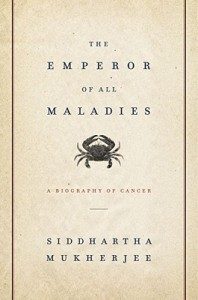
This book presents our modest and humble understanding of cancer — the scrappy, fecund, invasive, adaptable twin to our own scrappy, fecund, invasive, adaptable cells and genes that is impossible to disconnect from our bodies. Siddharth Mukherjee expended much of his ink dissecting and analyzing the emperor of all maladies, cancer, through poignant, ghoulish, morbid stories of people who destined to be pillaged and plundered by the emperor — cancer. I have bitten more than I can chew by picking this book up without realizing that it is heavily ladened with too many details to assimilate. In contrast to other biographies, this book doesn’t confront the death of the subject. Furthermore, the author harrowingly writes that it is unlikely that we will soon see a magic bullet for the treatment of cancer, but it is just as unlikely that there will be a magic bullet that will knock out the full spectrum of cancer. Finally, death in old age is inevitable, but death before old age is not — represents a far more reasonable goal to define success in the War on Cancer!
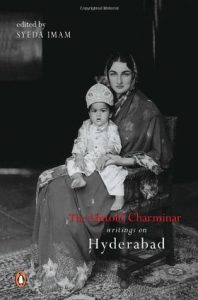
Whenever and wherever I mention that I live in Hyderabad, I am subjected to a pyroclastic flow of Hyderabad’s glorious past gushing out with a sense of pride — my tone shrieks with exclamation marks when I have to say Hyderabad!! Hyderabad founded by Quli Qutb Shah with a city plan ready in 1591, incorporating many of the features of the mythical Islamic heaven, now abounds in recurrent images, phrases — and stories that are less myth more truth, than most. There is something drone-like about the cliches; the state long presided over by the world’s richest man, home to the Salar Jung Museum, the Charminar, the Golconda diamonds, and the most likely to the Kohinoor, the Orloff, the Jacob, the Hope, the Great Mughal, the Darya-i-Noor. Hyderabad is a distinct Deccani culture, the product of a very particular mixture of peoples and influences. It was based on religious tolerance, courtesy, hospitality, love of arts and a first-rate civil service which made no distinction between creeds or caste or class. Religious tolerance —that rare value of accepting different cultures readily — has been an integral part of the culture of the Deccan for good reason. This hair-raising book, the untold Charminar’, Syeda Iman is a gleaning of many who touched the city and were moved; who know and will tell; who relish and wish to share that relish. Finally, although the Hyderabad that I reckon — the city of pearls, the city of lakes, the city of gardens has died, Hyderabad lives on!!
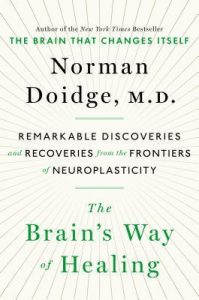
In a culture that often favors the visual over the acoustic, and where ‘seeing is believing’, neuroplasticity that has been dismissed by neurosurgeons, as the author writes, emerged as a panacea for most of the diseases, such as Autism, Parkinson’ disease, Schizophrenia, Epilepsy, Paralysis, etc. In this book, the author illustrates brain as plastic that changes as it works with poignant crestfallen stories of patients with disordered neurons in their cranium. Neuroplasticity, as the author writes, is predicated on the utilization of energy — including light, sound, vibration, electricity, and motion. In contrast to the conventional practices, where people are subjected to constant discomfort, invasions of body and brushes with death, neuroplasticity provides natural, noninvasive avenues into the brain that pass through our senses and our bodies to awaken the brain’s own healing capacities. I was completely wallowed reading this book. Learned many new things about the brain, especially to learn that brain is malleable; and why running is the best medicine for brain’s healing!
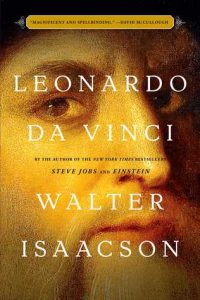
Leonardo Da Vinci — the archetype of the Renaissance man, an inspiration to all who believe that the infinite works of nature are woven together in a unity filled with marvelous patterns — in this book, although Walter Isaacson has copiously documented all trivial details about the Leonardo, the painter, he barely touches on Leonardo Da Vinci, the architect, the mathematician, the engineer, and so forth. To my mind, this book is sort of panegyric by Walter Isaacson to Leonardo the painter. It, however, presents how Leonardo sought knowledge; he sought knowledge for its own sake — not all knowledge needs to be useful, sometimes it should be pursued for pure pleasure, writes Leonardo! This book, I’d not say riveting or a rewarding read, but it is indeed a good reference for fledgling artists!
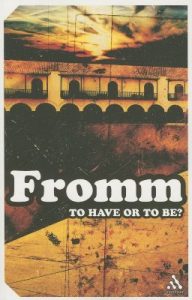
This book offers a smorgasbord of knowledge from the subjects on psychoanalysis, on the art of existentialism and surrealism, on human’s avarice and altruism, and on to have or to be. When our education generally tries to train people to have knowledge as a “possession (to have)” — making us fatuous, deflated, defeated and unfinished man, this book profusely talks about the potentialities of human nature in the “being (to be)” mode of existence. Fromm notes that the having mode of life, i.e., possession of things — dismembers our life and lobotomizes our self — leaving us void. He further adds that “it is only when we have given up the crutch of property, we begin to use our own proper forces and walk by ourselves. What holds us back is the illusion that we couldn’t walk by ourselves, that we would collapse if we were not supported by things we have. We’re like a child who is afraid that it will never be able to walk, after it has fallen the first time”. This book presents some nice insights, however, insights separated from practice remains ineffective!
Books I read in 2017!

We live orphaned on a tiny rock in the immense vastness of space, with no hint of even the simplest form of life anywhere around us for billions upon billions of miles, alone beyond all imagining — such is the life of Chris Knight who ensconced in woods for more than two decades. This book chronicles the life of Chris Knight, a questionable hermit, who wanted to transcend the vapidity of life, who is worried about having an identity applied by someone else, who thinks of himself as a Nietzschean Übermensch. Since there is a sliver line between the solitude by chance or by choice, it is unclear to me, if Knight suffered from Schizoid, however, learning about solitude and silence from this book is truly enlightening. This book offered me a new meaning to Silence — it provides a deeper level of thought, a journey to the bedrock of the self.
To borrow from philosophy of Tao Te Ching — it is only through retreat rather than pursuit, through inaction rather than action, that we acquire wisdom. Those with less become content, and those with more become confused.
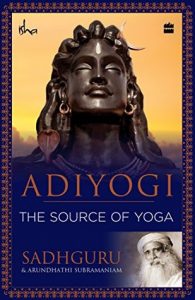
The gates of my heart were flung open, and joy flew far above everything while Sadhguru, in his raconteur tone, demystifies the spiritual traditions of the yogic sciences in this captivating book. Sadhguru while retelling the source of yoga, segues between legend and history. In the yogic traditions, Sadhguru writes, Shiva can be alluded to either of two possibilities, Shi-va, that which is not and Shiva, Adigyogi, the progenitor of Yoga. In this book, Sadhguru presents a vivid understanding of yoga, the spiritual journey, a journey towards clarity, but never towards certainty. Sadhguru writes “When you draw conclusions about beginnings and endings, you are a believer. When you accept that you really do not know anything, you become a seeker. To be enlightened is not a condition of certainty. It is to move from limited knowing to boundless unknowing, from gravitas to grace”. A rewarding and beautiful book!
When you accept that you really do not know anything, you become a seeker. To be enlightened is not a condition of certainty. It is to move from limited knowing to boundless unknowing, from gravitas to grace. To know the life in its entirety, one has to become one with it — not cerebrally, but experientially. Through only knowing, not knowledge. Knowledge is intellectual accumulation; it is information gathered and processed in bits and pieces. Knowing, on the other hand, is neither intellectual nor accumulative. Being that which is not is the most auspicious thing, this is because you can find fault ‘that which is ‘. You can like it or dislike it; you can agree with it or disagree with it; but ‘that which is not’ is perfect. ‘That which is not’ is the most auspicious, because nobody can find fault with it.

Humanity’s understanding of the physical world is filled with a glut of chasms, grand canyons and huge yawning voids, which has had convulsed physicists. This book armed with infographics and cartoons presents a lucid explanation of science to the laity, who is inquisitive to do some mind-bending to understand the bizarre universe that besieges him/her. The duo authors although make an attempt in this book to make sense of the universe that ladened with the weird things which actually don’t make sense, the narrative of the book turned to be more prosaic and repetitive. I think I can say it is written with a bit of cavalier attitude in the last few chapters. However, this book provides a light-hearted understanding of the ununderstandable universe. The take away from the book is — today’s philosophical questions are tomorrow’s precise scientific experiments!
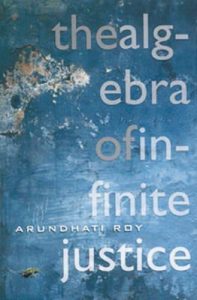
Until I have read this book I didn’t know that Arundhati Roy is a deadly butcher, like a seasoned assassin. She chooses her target carefully. Equips herself with unfailing arms and ammunition by hours and hours of stern research. And then she strikes. Relentlessly. Mercilessly. She strikes to kill. Kill the target in the eyes of the reader. The targets in this book are — the western hypocrisy, whose histories are spongy with the blood of others; cynical enterprise where a preponderance of people displaced by big dams at the altar of national progress; the unconscionable attack of America against the people it doesn’t know (Afghanistan); and the democracy in the Indian context, where not just one million soldiers on the border who are living on hair-trigger alert — it’s all us. A provocative book that sent chills up my spine! (The description of the author is inspired by an anonymous reviewer on GoodReads).
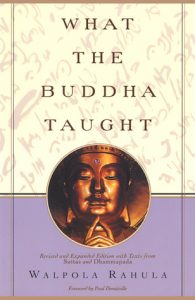
In this book, Rahula ostensibly attempts to expound the teachings of Buddha from the extant Pali texts of Tipitaka. Although I do not make bones about any of the teachings presented in this book, I take these precepts advocated in this book with a truckload of salt as I am unsure of what Buddha himself actually taught, and there is a room for my skepticism toward Rahula’s interpretation of Buddha teachings. Also, I feel that Rahula has crossed the Rubicon when he periodically proclaims the only Buddhism is the apostle of absolute truth. So, in my naivety, the only way to understand Buddha’s modus-vivendi or Hindu system is to seek and experience it and not by the commentaries.
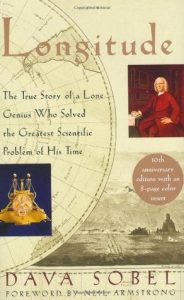
In this treatise, Dava Sobel eloquently writes how discovering the longitude became a synonym for attempting the impossible when the so-called solutions to the longitude problem had been a dime a dozen even before they went into effect. This book is memoir of John Harrison, a village carpenter, who having (unheard/heard?) of the half-baked bids to find longitude in the sound of cannon blasts, in compass needles heated by fire, in the moon’s motion, in the sun’s elevation, and so forth — conceived a contraption, ‘the timekeeper H-1’ which keep its equanimity throughout the voyage withstanding the vicissitudes of climates. Leafing through Harrison’s life, who wrested the world’s whereabouts from the starts, and locked the secret in a pocket watch is truly inspiring and rewarding!
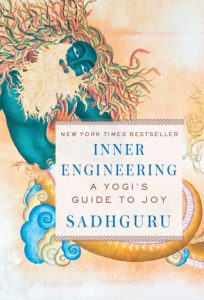
Never before has a generation of people known the comforts and convenience we have today. And yet, a vast number of people live in states of constant anxiety and depression — many are suffering the consequences of their success and of their freedom. To understand life in its entirety, Sadhguru solemnly writes, one has to transcend the intellect, the discriminatory and logical dimension of the mental framework. While taking a jibe at the people who conjure an image of Yoga as bone-bending, muscle knotting, and teeth-gnashing contortionism, Sadhguru advocates Yoga, the science of being in perfect alignment, in absolute harmony, in complete sync with existence, in this riveting book Inner Engineering. This book is indeed a joy, which is a rare visitor in most people’s lives. There is a way out to joy. And the way out is in.
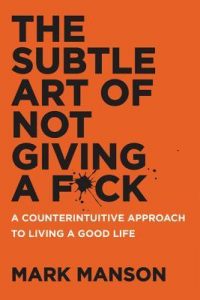
This book, although well articulated, reading and engrossing the ideas presented in this book, to my mind, would be like committing psychological hara-kiri. It was a great disillusionment to read this book as the author’s philosophy lacks universal appeal and vacuously written. There are several instances in the book where I can’t agree with the author and the book itself is sloppy. Furthermore, the author presumes to take down on the what he calls conventional wisdom, while the book itself stands on clichés.
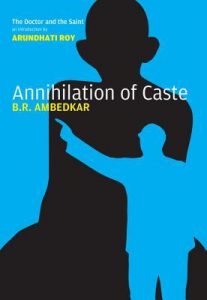
If caste is primarily the breath of Hindus, Ambedhkar woefully writes, Hindus have fouled the air all over, and everybody is infected — Sikh, Muslim, and Christian. In annihilation of caste, Ambedhkar enunciates why caste exists and why it will continue to exist until Indian society undergoes radical, revolutionary change. Ambedkar says “What is the use of fundamental rights to the Blacks in America, to the Jews in Germany and to the Untouchables in India? A sense of abomination and astonishment crept into my veins, when Ambedkar’s most formidable adversary, the most famous Indian in the world, Mohandas Karamchand Gandhi, disagreed and believed that caste represented the genius of Indian society. To my mind Ambedkar’s thesis on the annihilation of caste manifest flaws, when he denounces Hinduism by invoking Vedas, Smritis, and other texts. In my naivety, Hinduism is not a religion and never ever has it been a proponent of Casteism. The best interpreters of the texts are not learned men surely. Learning there must be. But religion does not live by it. It lives in the experience of its saints and seers, in their lives and sayings. When all the most learned commentators of the scriptures are utterly forgotten, the accumulated experience of the sages and saints will abide and be an inspiration for ages to come.
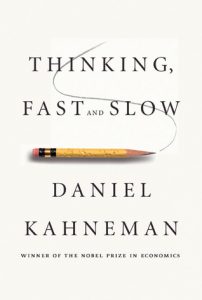
I shall never forget the astonishment with which I read this book. I was chagrined to discover when the author expatiated on how we think with arrant inanity most of the time. The author writes with a rapier wit on thinking, fast and slow, where he provides suggestive evidence of theory-induced blindness. Although I do not assent with the author in few places where I think the author made sweeping conclusions, he vehemently writes how the emotional tail wags the rational dog. This book is indeed thought-provoking and intriguing! This book is also enlivened with some interesting quotes:
Beyond the satiation level of income, you can buy more pleasurable experiences, but you will lose some of your ability to enjoy the less expensive…
Nothing in life is as important as you think it is when you are thinking about it.

Hillbilly Elegy is a memoir of a disadvantaged white guy who hails from both Appalachian Ohio and Kentucky. Hillbilly Elegy presents a back-of-the-envelope of the dreadful poverty that besieges the Middletown, Ohio. J. D. Vance delves into his personal details delineating how he moved up from the lowest rungs of the economic ladder despite his troubled upbringing that haunts him. Though the author expounds on destitue that surrounds them, there are no big cliffhangers type mystery propelling this story. It is a story of a hillbilly who survives the chaotic, mostly fatherless childhood with an unhinged mother and gets an admit at Yale law school.
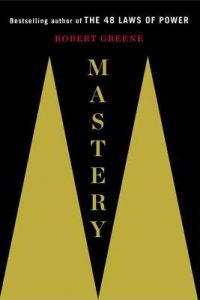
Robert Greene expended much of his ink dissecting and analyzing the lives of assorted luminaries in diversified fields, such as Darwin, Einstein, B. Franklin, Paul Graham, etc. The author clinically writes about the ways to rise to the level of Mastery through the exegesis of people with preeminence. Robert emphatically writes about discovering one’s life task, the inner force that seeks to guide us; with a plethora of examples, the author corroborates his rubric presented in the book, explaining the edifices life has to offer to us. One of the many facets of the book discusses navigating through people’s mind, manipulating people and strategies for acquiring social intelligence. It’s a riveting book with an eclectic collection of biographies!
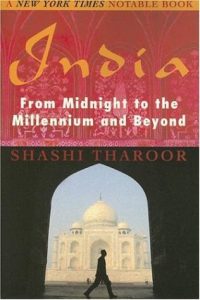
Shashi Tharoor unduly writes about India in this engrossing book ‘India – From Midnight to Mmillennium and Beyond’. India is singular, but exists as plural with caste, creed, colour, cuisine, custom’. India can be couched only in terms of pluralism. Tharoor trenchantly writes about India after 50 years of Independence punctuated with his anecdotal experiences during his adolescence. In his book, Tharoor decries Mrs. Gandhi hegemonic reign during the emergency in 1975/77 while bemoaning over the venality, bigotry, dishonesty, incompetence, and just plain criminality India has had beset with. Although the book was written 15 years ago, it reverberates with the current Indian affairs as I read it in 2017. As I wallowed reading the book I found some parts of it bit too repetitive.
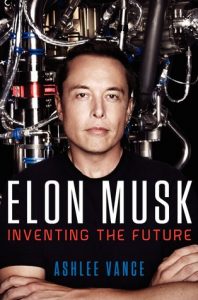
When the man is left dangling near the end of the branches at the top of the tree and mostly just refining past inventions, Elon Musk emerged as a visionary and is a bit different from the run-of-the-mill entrepreneurs in silicon valley. Elon garnered attention and of course earned notoriety for making weird pronouncements vis-à-vis SpaceX, Tesla, Hyperloop and for his whimsical plans while silicon valley is ladened with a plethora of ho-hum companies. Elon’s biography is truly inspiring and gripping account as Tesla and SpaceX bordered on bankruptcy for much of its existence and been one major technical gaffe from obsolescence at all times. In my naivety, Elon falls into the spectrum of his peers Bill Gates and Steve Jobs!
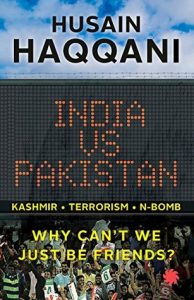
After having chewed over the views proffered by Husain Haqqani on the relationship between India and Pakistan, I believe that the reasons for hostility between the two states are multipronged – and resolution of the so-called Kashmir conflict alone wouldn’t subside the tensions b/w the two nuclear-armed states, terrorism, for example. Husain writes that the Pakistan fears that India would undermine, disapprove and ridicule the ‘two-nation theory’; weaken Pakistan to an extent that it ceases to pose any threat to Indian hegemonic designs. Further, her desire to seek parity with India only complicates the issue. India and Pakistan may have centuries of shared history but the contending nationalism, passionately taught in schools and also cultivated through jihadism and Hindutva extremism for seven decades, have eroded the commonalities b/w the two people!
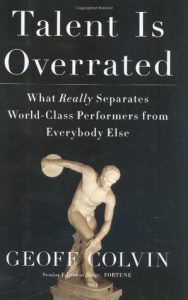
This book debunks the myth many of us harbor in our psyche – that innate talent is something imperative to reach the top rungs of performance/excellence ladder. Geoff Colvin, in this captivating book ‘ Talent is Overrated…’ advocates that the deliberate practice is the way to achieve the desired efficacy of any profession. It is with only conscientiously designed practice and continuous feedback one reaches the level of pre-eminence. The belief that the performance is forever limited by lack of specific innate gift is a travesty, however, one caveat that deliberate practice carries is that it is very demanding, taxing and could be affected by milieu. Above all – the great performance is not reserved for a preordained few; it is available to me, to you and to everyone!
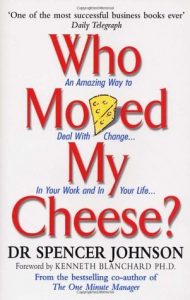
Who moved my cheese by Spencer Johnson, is an excellent metaphor for people who fear to change. Spencer narrates this allegory through four characters who live in a maze that is a labyrinth of chambers and corridors and look for cheese to nourish and make them happy. This book reveals a profound truth about change and anchors some wonderful truisms: noticing small changes early helps you adapt to the bigger changes that are to come; if you do not change you can become extinct; the biggest inhibitor to change lies within yourself, and that nothing gets better until you change. A short and an amusing book!
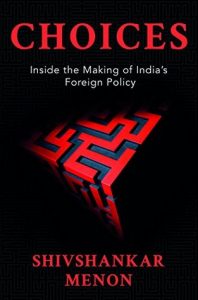
Shivshankar Menon recounts his experiences and the choices made during his stint as an Indian diplomat, a National Security Adviser and the Foreign Secretary, in this book “Choices: inside the making of Indian Foreign Policy”. Menon attempted to describe the reasons and considerations that weighed in the choices that were made in government, on behalf of India, such as the border peace and tranquility agreement with China, Indo-US nuclear deal, the decision not to retaliate militarily against Pakistan for 26/11 Mumbai attacks. This book leaves the readers with some sense of the complexity and joys of foreign policy decision making, of the balancing of interests that it requires, and of minimizing harm and maximizing gain, in situations where not all considerations are entirely synchronized. One takeaway from this book is that ‘diplomats do not combine means with a view to ends, like engineers; they take risks, like gamblers.”
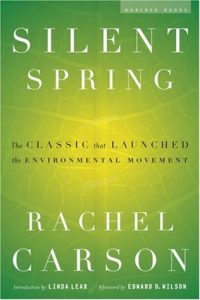
Only yesterday mankind lived in fear of scourges of smallpox, cholera, and plague that once swept nations before them. Today we are concerned with a different kind of hazard that lurks in our environment – a hazard we ourselves have introduced into our world as our modern way of life has evolved. Written in 1962, by Rachel Carson, Silent Spring as I read it after almost six decades of its arrival is bit anachronistic, but nonetheless, the concerns raised in the book are extremely relevant even today. Silent Spring introduces the reader to a myriad of pesticides and insecticides, such as DDT, eldrin, dieldrin, parathion, malathion, etc, which not only turn against insects but also against human. This book is ladened heavily with the nomenclature of flora and fauna which I am not aware of, and hence, it was a bit tough read.
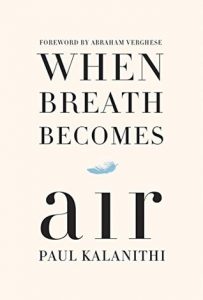
When breath becomes air is the memoir of Paul Kalanithi, a neurosurgeon who was stricken with lung cancer. Paul, as he writes in his book, devoted much of his time before cancer purchased his life in reconnoitering reams of philosophy and literary work to understand the meaning of life; and studied neuroscience, which he believed would lead to an epiphany in the crucible of rooms flooded with patients. However, to my mind, this is a book with hardly any substance; in my opinion, it stands banal and too cliched!
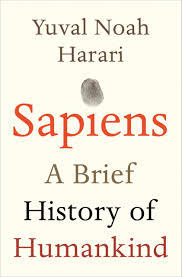
The author, Yuval Noah Harari, fervently writes in the captivating book Sapiens: History of Humankind, how the mental and social skills help humans striding up to the top rung of the sociopolitical and economy ladder. Yuval Noah expended much of ink in writing about the figments of imagination humans conceive and transform them into cruel — and very cruel social structures. Further, he poignantly writes how Sapiens have evolved with rapacity and wiped out millions of animals in the annals of the planet. With the advent of the cognitive revolution, Sapiens acquired the technology, the organization skills and it also served as a cornerstone for Yuval, who is presumably a Sapien, to write this excellent book!
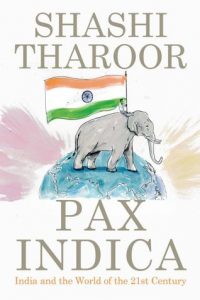
As someone who has devoted three decades of his life to multilateral cooperation at the United Nations, Shashi Tharoor, undeniably an aficionado of global governance and foreign diplomacy. Shahi in his riveting book ‘Pax Indica’, trenchantly notes the forces that thwart India from becoming a major power at the global table. He peevishly writes about the impediments that India bedevils from its neighbors, which nurture and provide succor in their soil; the claims of its frontiers from the overweening China, which is one of the incipient major powers in the 21st century; and the policies with the USA which most of them are desultorily formulated. He eloquently adds, how India has transmuted from the stereotype west has from as land of snake-charmers and begging bowls — poverty marginally leavened by exotica to a land of engineers and scientists who are now seen as a synonym with mathematics and science and IT. Further, he adds how India can rise as a soft power by promoting its creed, culture, customs, cuisine, Bollywood, etc! Tharoor, proffered in this book, that reform at United Nations is salient for the well-being of the world!
The post-colonial India, which weaned on multilateral lenders has transformed itself to where no power on earth can presume to dictate to India on any international issue in this 21st century!
Books I have read in 2016!
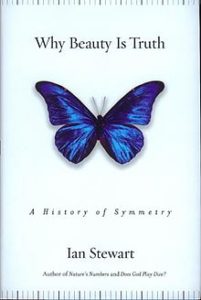
The major portion of this book chronicles the lives of some of the luminaries in Mathematics. The author and mathematician, Ian Stewart in the book ‘why beauty is truth’, made an attempt to present the ideas of symmetry and how it has sprung up from group theory invented by Galois, however, the book stands prosaic and lackluster. I was of the opinion that this book lays some interesting insights into group theory liaison with symmetry. To my dismay, this book focussed mainly on the mathematical pedigree and lacks beauty!

The speech turned into a book, Shashi Tharoor in ‘An Era of Darkness: The British Empire in India’, makes a bold attempt to strike back at the British colonialism in India. While this book aroused intense emotions as I read this book, when I am myself an expatriate in England, Tharoor has done a great deal of effort in his analysis of the iniquitous of the imperialism and the rapaciousness of the Briton’s forebears. This book lays bare the colonialism as a tale of slavery, plunder, corruption, land-grabbing, famines, exploitation, indentured labour, impoverishment, massacres, genocide and forced resettlement!
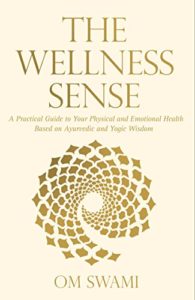
Om Swami presents a holistic understanding of health. In the book, the wellness sense, he brings the wisdom from the disciplines of Ayurveda, yoga and tantra, which insists that we are an integral part of nature, to the fore. He explains how living in harmony with nature brings changes in our very own nature. He also succinctly writes about the correlation and interdependence between one’s mental and physical states; how one’s state of mind affects one’s physical health and vice versa!
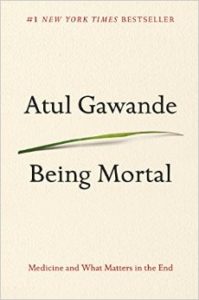
Atul Gawande, a prolific writer of medical science posit his views on the struggle to cope with the constraints of our biology, with the limits set by genes and cells and flesh and bone. Gawande, who himself is a neurosurgeon, describes in this book, being mortal, the modern experience of mortality -about what it’s like to be creatures who age and die. He also presents a light-hearted overview of the finitude of medical sciences. A terrific book, with jaw-dropping stories of his patients.

This is a complete different book than I assumed it to be. Becker in this book on the denial of death advises to practice dying. He further adds that cultivating awareness of our death leads to disillusionments, loss of character armor and conscious choice to abide in the face of terror. However I don’t completely agree with the points he has broached in the book. I am not very surprised when the author shames us with the knowledge how easily we will shed blood to purchase the assurance of our own righteousness!
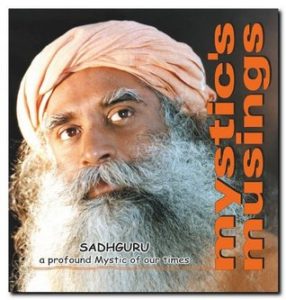
Sadhguru, an uneducated Guru, Jaggi Vasudev, in the book mystic’s musings unfolds the truth; the truth which I believe it is, after brooding over it for some time. Jaggi in his discussions with his disciples jokes through some hair-raising revelations about life, and existence. His musings shock, provoke, amuse, intrigue and entertain! reading this is an ineffable joy! – one of the best books on spirituality I’ve read!
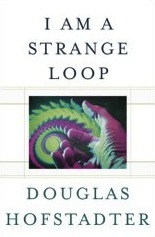
The molecules constituting the book had managed to get the molecules in my head to get the molecules in my hands to get the molecules in the book, ‘I am a strange loop by Douglas Hofstadter’. This reading consumed a good amount of time to get the gist of the self-reference, the ‘I’-ness discussed in the book. Half of the book discusses the Kurt Gödel’s incompleteness theorem, which posits the limitations of the Principia Mathematica, and self-referential loops. In the other half of the book, author argues that there is no such thing as “I”; and the concept of ‘I’ is a myth! It’s just an hallucination hallucinated by hallucination. And he further adds that, a man can inhabit multiple brains in their careenium/skulls. A very profound and different book to what I have read so far!
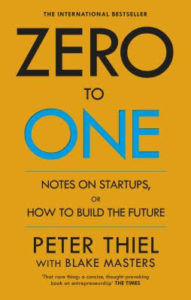
This guy, Peter Thiel, believes in monopoly for a company or a start-up to be successful. Maybe he is right or maybe not; however, to support his ideas/opinions, the author, Mr. Peter, illustrates few examples, which in my opinion are imbecile. Perhaps, the author must ask right questions for himself. A painful read….!
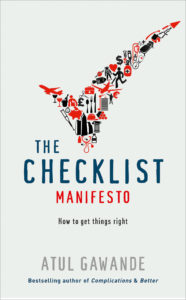
The modern world has given us stupendous know-how, yet avoidable failures continue to plague us everywhere. Atul Gawande, a general and endocrine surgeon, in this riveting book explains how checklists have made possible some of the most difficult feats, from building skyscrapers of mind-boggling sophistication to flying planes. Man is fallible, but maybe men/checklists are less so.

An excellent book with amazing illustrations. Sadhana, the realization of life, by Rabindranath Tagore – presents ideas that are very deep and thought-provoking. It’s very hard for me to describe Sadhana. I found an ineffable joy reading this book. But one idea that is prevalent in the books I have recently read is that, the most important lesson that man can learn from his life is not that there is pain in this world, but that it depends upon him to turn it into good account, that it is possible for him to transmute it into joy! Life leads us instinctively to take a wider view. It gives us an ideal of perfection which ever carries us beyond our present limitations. Finally, the man who loses all pleasure in accepting pain sinks down and down to the lowest depth of penury and degradation!
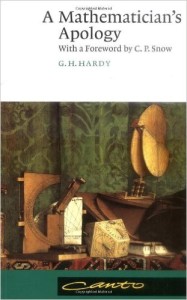
I shall never forget the astonishment with which I have read this nice memoir of Hardy’s (A Mathematician)’s Apology. Hardy, who found his genuine passion for mathematics from Jordan’s famous ‘Cours d’analyse’ book presents the distinction between the real and trivial mathematics, and how much of it has the value. Hardy’s best work, he adds in the apology, was done in collaboration with Littlewood, and in 1913, when he discovered Ramanujan.
It is never worth a first class man’s to express a majority opinion. By definition, there are plenty others to that – G.H. Hardy.
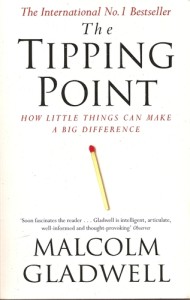
To me, the book title, the tipping point, is misleading. Much of the book deviates from the main course – stressing on examples for examples. Malcolm Gladwell discusses the discordant incidents which, to me, sounded irrelevant to the ‘title of the book’. A prosaic and dull book – I now wonder what had tipped this book to become an international number one bestseller! A black swan, perhaps…
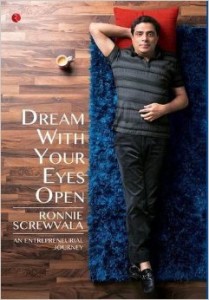
Ronnie in this book, shares his entrepreneurial journey that spans twenty five years. The UTV founder sprinkled some ideas for the young entrepreneurs about the potential and the untapped areas in Indian market that could benefit the country. However, I find this book little soporific and lackluster; also, I suppose there is still a room for improvement in the way the book is presented!
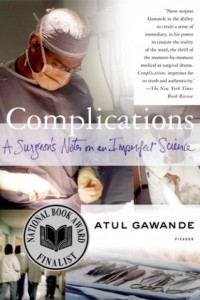
It’s a gripping account of the fallibities the surgeon make in the operating room. Atul Gawande provides unflinching view from the scalpel’s edge, where the information is limited, stakes are high, and yet decisions must be made. He shares some jaw-dropping anecdotes from his term as a resident. Gawande reveals how daily mistakes occur, and why good surgeon go bad. He further adds, that human beings, in some respects, permanently mysterious! no human is quite like any other human, and hence, Complications!
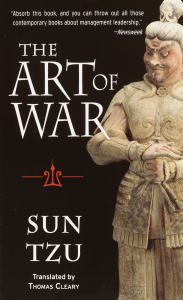
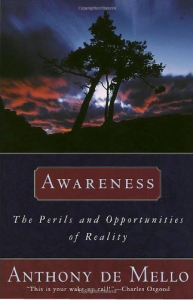
Every animal with blood in its veins and horns on its head will fight when it is attacked. How much more so will man, who carries in his breast the faculties of love and hatred, joy and anger! The 2500 year old classic, The Art of War, which was revered by the Chinese, is a compendium of military science. In my opinion, this book can be condensed into one saying — If you know the enemy and know yourself, you need not fear the result of hundred battles. If you know yourself but not the enemy, for every victory gained, you will also suffer a defeat. If you know neither the enemy nor yourself, you will succumb in every battle…by Sun Tzu, a philosopher and a great general!
| A very profound and an engrossing book on spirituality. Insights drawn in this book, Awareness, might descend into your roots and shake them in their clinging to conditioning, addictions and attachments. Anthony de Mello’s message to the reader is that –change comes through awareness, awareness alone; and not by changing your exterior world i.e., through getting a new job or a new spouse or a new home, etc. That would be like imagining that you change your handwriting by changing the pen. However, I find the book a bit repetitive. A good read, though. So, wake up! as the author says, it is your wake-up call! |
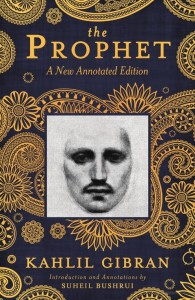
Prophet – The gates of my heart were flung open, and joy flew far above everything while I read this book The Prophet by Kahlil Gibran. It speaks to us of marriage, children, giving, reason and passion, love, self-knowledge, etc. It was said wisdom is not transferable, but these songs, musings try to offer reader wisdom, truth. Ay, having read this offerings, I say not, ‘I have found the truth’, but rather, ‘I have found a truth!
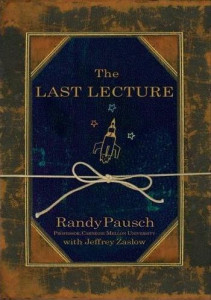
Randy Pausch in his book, the last lecture, tells the reader that he likes ‘clichés’; perhaps, because of his proclivity towards cliché, the book, in my opinion, stands out to be cliché. In other words, the book is more of empty flattering rather than a book of substance; it is just a short memoir of a person named Randy Pausch,who was stricken with pancreatic cancer
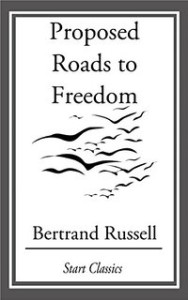
This book discusses the Socialism, Anarchism and Syndicalism. Bertrand Russell advocates his belief in this book that communal ownership of land and capital, which constitutes the characteristic doctrines of Socialism and Anarchist Communism, is a necessary step towards the removal of the evils from which the world suffers today; and finally, the road to all that is best is the road to freedom!
Four thousand million years ago molecules with the power to make copies of themselves first appeared on this planet. What was to be the fate of these ancient replicators? Yes, this book ostensibly talks about the evolution; it discusses the altruistic and selfish behaviors of the gene. Ever wondered why parents show altruism towards their children? Dawkins puts this elegantly – it is perhaps because of the selfishness of the genes to prosper long-way in the future. I’d not say it is intriguing, but it is worth to read to get some insights about the evolution!
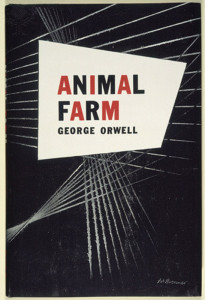
George Orwell had penned this book in 1943 as a tirade against the Soviet Union. To me, at first, this book sounded like an allegoric story aimed at toddlers – like a story intended to lull a child to sleep. But nevertheless, I was completely engrossed in reading this book. It serves as an exemplary metaphor to the world we live in – it illuminates the range of human experience from love to hate from comedy to tragedy!
This book chronicles the journey of an exuberant and acutely observant 23-year-old young guy who decided to go off exploring the world.
It is not about Che Guevearas’ philosophies, and ideas that associated himself in the later part of his life.
Also, this book reminds me of the book ‘zen and the art of motorcycle maintenance’, which however imbues some philosophical aspects of life…
Having read these two books – and as I write this review – I knew I’d be writing a travelogue in the near future….!
Elegant, startling, and universal in its applications, the black swan might change the way you look at the world.
A black swan is a highly improbable event with three principal characteristics : unpredictable; carries a massive impact; and to know the third – better read the book.
Perhaps because of an anachronistic read – I found this book a bit soporific, and dull. Michael Dell, in this book, completely fixated with costumers’ products and services – and discusses nothing beyond that arena. The first not so good entrepreneur book I ever read.
This book presents Jeff Bezos’ feverish dreams and his goal of Amazon becoming the everything store. After having read this book, I feel sympathy for the employees of the Amazon, a missionary and mercenary company!
Cosmos — A gorgeous book in every possible way. Carl Sagan makes the astronomy and the math and the mind-boggling complexity of the universe not only comprehensible but palatable. He wraps up our history as a species into the history of the universe. This read made me feel like a mote of dust in the cosmic ocean….also, humility…..
Tuesdays with Morrie is a magical chronical of their time together. This beautifully written and short autobiography presents ideas that are poignant, sweet and thought-provoking. Sprinkled with mildly heartbreaking elements.
This is the story of an old Cuban fisherman who had gone eighty-four days without making a catch and of what happened when he hooked a monster marlin on the eighty- fifth day. Alone in his little skiff, unable to fasten the line because the giant fish would break it if he did not lessen the strain with his own body and pay out more line when necessary, the old man endured days and nights of hunger, exhaustion and pain from the line cutting his hands. And finally he caught the fish and lashed it to the side of his skiff only to spend his return voyage fighting off sharks. Besides, it is also compendium of some nice quotes.
“But man is not made for defeat, a man can be destroyed but not defeated.”
“Luck is a thing that comes in many forms and who can recognize her?”
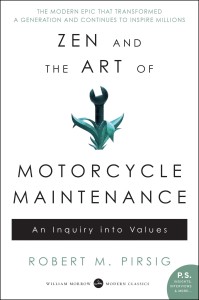
The book is, as the title says, about Zen and about motorcycle maintenance, but it is also about a unification of spiritual feeling and technological thought. Part of it discusses that the division between these is a deep root of the discontent of our age, and it offers some heterodox solutions.
The book offers another, more serious alternative to material success. It’s not so much an alternative as an expansion of the meaning of success to something larger than just getting a good job and staying out of trouble. And also something larger than mere freedom. It gives a positive goal to work toward that does not confine.
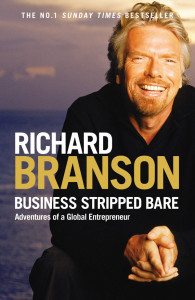
Richard Branson an iconic entrepreneur, founder of Virgin group – shares many inspiring and wonderful anecdotes from his life as an entrepreneur. This book spans from brand, delivery, innovation, entrepreneurship to social responsibility (well, they are actually chapters of this book). The take away from this book is that in business, as in life, one has to protect against the downside – and make a difference!
The brave may not live forever – but the cautious do not live at all….!
Thousand Splendid Suns — One could not count the moons that shimmer on her roofs, or the thousand splendid suns that hide behind her walls.
Finally, a good book, a powerful portrait of female suffering and endurance under the Taliban.
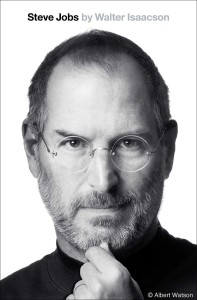
This is one of the best bios I ever read so far; it did take much time to complete it as I read it sporadically. Isaacson has done an outstanding job in writing an unflinching biography of manifestly the greatest CEO’s of my era. Steve, a perfectionist, a great craftsman, and a family man, too (which I didn’t know until I read this book)! This book is a captivating account of a digital visionary whose products have enthralled millions of people. I guess I am now scrambling for words to describe his passion, which is ineffable. In a nutshell, it is a riveting and worth reading this book.
Books I have read in 2014
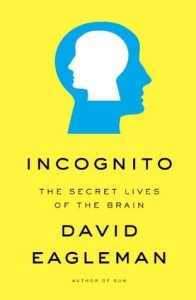
Well, this is my second book that I read on neuroscience after ‘phantoms in the brain’ by V.S Ramachandran. Half of the book is the same old story covered perhaps in any that discusses brain. And the rest of the book discusses how neuroscience can be used in criminal cases and in culpability. David Eagleman rubs the nose of neuroscientists who takes reductionism to explain the complex beast. Reductionism, however, has been the engine of science since before the Renaissance, is not the right viewpoint for everything. In short, this book discusses how outlandish and what a perplexing master piece the brain is…
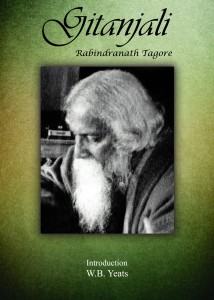
First poetry book I ever read. Rabindra rachanavali starts with
Thou hast made me endless, such is thy pleasure.
This frail vessel thou emptiest again and again,
and fillest it ever with fresh life.
This little flute of a reed thou hast carried over hills and dales,
and hast breathed through it melodies eternally new.
At the immortal touch of thy hands
my little heart loses its limits in joy
and gives birth to utterance ineffable.
Thy infinite gifts come to me
only on these very small hands of mine.
Ages pass, and still thou pourest,
and still there is room to fill.
This book engrossed me completely as Tagore compares God to mother earth in an enthralling way. Gorgeously written!
The God Father :
Reading fiction is not my cup of tea, and moreover, reading a colossal fiction book such as the god father is indeed difficult. Perhaps, I might be the only soul known who showed apathy towards the so called ‘Classic book’. Not to mention this is my second fiction book that I have ever read after the chronicles of death foretold by Garcia.
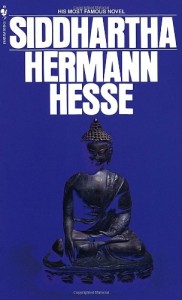
It is an allegorical novel written by Herman Hesse. Again, this is the first book I ever read something of that sort. It is a well written book, and is about a young man who embarks on journey that takes him from the austerities of renunciation to the profligacy of wealth, that eventually leads him to a range of human experiences. A journey that leads him to a river where he gains peace and finally wisdom.
“Adage: Knowledge is transferable but not the Wisdom.”
This is the first book I ever read something related to business. Bruce Poon provides a new flavor of tourism/travelling. He bridged the gap between the mainstream travelers and backpackers through G Adventures by providing the sustainability to the locals of the visiting place. It redefined the concept of traveling; he believed that traveling is all about exploring and learning people customs, tradition by leaving the “comfort zone, and not a status quo”. He also believed in ‘Karma’ paying it forward. Poon Tip has created an entirely new refreshing approach to the management. At G Adventures, Poon gave up his title ‘CEO’ and gave all the customer-facing employing the title ‘CEO (Chief Experience Officer) instead.
Finally, it is a must read book for people who want to revolutionize and change the world.
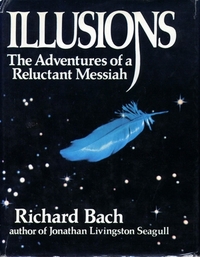
Firstly, this book was gifted to me by my friend Murali!
Secondly, coming to the book; on a philosophical note, Richard Bach provides insights of illusions that people have created. It presents that reality is an illusion, and people do not require airplanes or such things to soar; after all, messiah is inside them.
Finally, in short, this book is a compendium of life quotes which are too deep to understand.
One such quote is: “Here is a test to find whether your mission to Earth is finished; If you are alive it isn’t”.
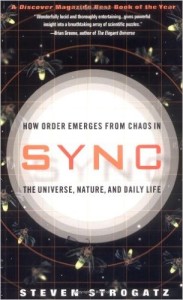
Strogatz exposes how synchronization shows up in the universe; for example, how, in congregation, the fire flies flash in unison, and how our sleep cycle struggles for sync. This book discusses the sync from atoms to electric currents to our brain. Much of the book spans science and mathematics. It also delves into the situations/conditions for sync to happen. Elegantly written but soporific at times during the read, yet readable.
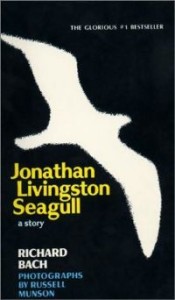
This fable of ‘Jonathan’ a Seagull is an exemplary metaphor for those who follow their dreams/goals, and make their own rules; no matter even if it is contrary to the norms of the normal flock (hordes of folks)!
Take away from this is life has no limitations, but unlimited freedom. Don’t believe what your eyes are telling you.
All they show is limitation; look with your understanding, find out what you already know, and you will see yourself soar!

Fermat’s Last Theorem is a problem which confounded the best mathematicians ever known such as Euler, Hilbert, Hardy, Cauchy, et al., for around 350 years; albeit, the problem is unambiguous and looks vulnerable unlike any other math problem. This books discusses the evolution of mathematics in number theory which dates back to Babylonian and Pythagorean’s age; also, it chronicles the life of Andrew Wiles who lived his dream of solving the 300 year old problem, which further led to invention of modern mathematics that could prove other theorems.
Femat’s problem: For x^n + y^n =z^n, there exits ‘n’ an whole number not greater than 2 and no solution otherwise.
“Proof is an idol before which the mathematics tortures himself” –Sir Arthur Eddington.
“God made the integers; all the rest is the work of man”—Kronecker.
It is indeed a magisterial work by Guha. A colossal book that chronicles the facade of India after the assassination of Gandhi by Godse. It portrays the repercussions that had happened during the partition, scuffle with the refugees from west and east pakistan. The hassle with Nagas, Kashmir, princely states and the experience of defeat with China under the regime of the then revered prime minister Nehru is well articulated. Also, It talks profusely on the descendants of Nehru, the emergency imposed by Indira Gandhi, the debacle of Congress thereafter, death of her younger son, blue star operation. And, finally, Why India Survives!
It is a must read book to understand the history of world’s largest democracy.
Mary Kom: This autobiography of Mary Kom clouded my eyes with tears while reading first couple of chapters, I must say. The perseverance, struggle of Mary Kom with her destitute background is heart breaking. The support she got from her husband to pursue her career in boxing, her husband looking after the chores and children is heartening.
This is well written piece….It is about a person who is black returned from militarily and hunting for a job. During his hunt, he has been rejected albeit he has amazing credentials just because of his color. As there is saying, this time shall pass, in his story too, it did pass and he bags a teacher post in a school teaching boisterous students. The way he deals with the students and how he gained their attention, love…is to sir with love….! a marvel piece…
Chronicles of death foretold: It is the first book that I read by a noble laureate in literature. It did take a couple of readings for me to understand this, I must say. That said, it is a great book which speaks of mysterious death of a young man….
